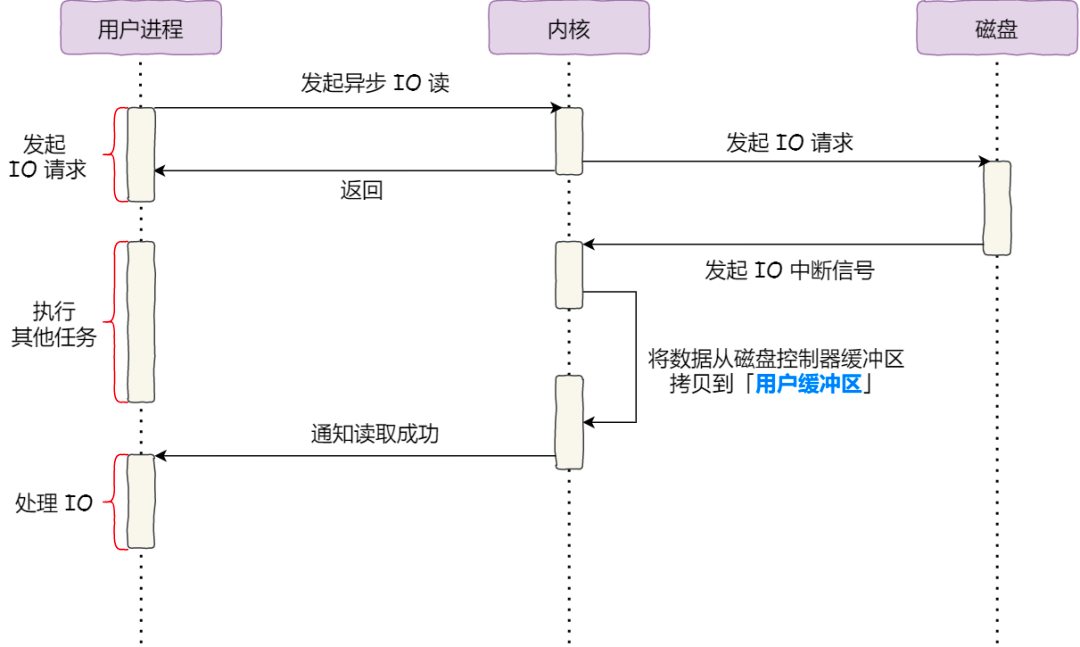Nginx是一个高并发,低内存占用的web服务器,单机可以达到5wQPS以上,并且内存占用非常低
nginx常用命令
- nginx主要命令
./nginx 启动nginx./nginx -s stop 终止nginx(当然也可以找到nginx进程号,然后使用kill -9 杀掉nginx进程)./nginx -s reload (重新加载nginx.conf配置文件)
nginx核心配置
nginx的配置分为全局块、events块、http块
全局块
从配置文件开始到events块之间的内容,此处的配置影响nginx服务器整体的运行,比如worker进 程的数量、错误日志的位置等
events块
events块主要影响nginx服务器与用户的网络连接,比如worker_connections为1024,表示每个
worker process 支持的最大连接数为1024
http块
http块是配置最频繁的部分,如虚拟主机的配置,监听端口的配置,请求转发、反向代理、负载均衡等
1
2
3
4
5
6
7
8
9
10
11
12
13
14
15
16
17
18
19
20
21
22
23
24
25
26
27
28
29
30
31
32
33
34
35
36
37
38
39
40
41
42
43
44
45
46
47
48
49
50
51
52
53
54
55
56
57
58
59
60
61
62
63
64
65
66
67
68
69
70
71
72
73
74
75
76
77
78
79
80
81
82
83
84
85
86
87
88
89
90
91
92
93
94
95
96
97
98
99
100
101
102
103
104
105
106
107
108
109
110
111
112
113
114
115
116
117
118
119
120
121
122
123
124
125
|
#user nobody;
# worker进程数量,即工作进程,通常设置=cpu数量
worker_processes 1;
# 全局错误日志和pid文件位置
#error_log logs/error.log;
#error_log logs/error.log notice;
#error_log logs/error.log info;
#pid logs/nginx.pid;
# events模块,影响nginx服务器和用户的网络连接
events {
# 单个worker连接的最大并发连接数
# 总处理量 = worker_processes * worker_connections
worker_connections 1024;
}
http {
include mime.types;
default_type application/octet-stream;
#log_format main '$remote_addr - $remote_user [$time_local] "$request" '
# '$status $body_bytes_sent "$http_referer" '
# '"$http_user_agent" "$http_x_forwarded_for"';
#access_log logs/access.log main;
sendfile on;
#tcp_nopush on;
#keepalive_timeout 0;
# 连接超时时间
keepalive_timeout 65;
# 压缩
#gzip on;
server {
# 监听的端口
listen 80;
# 虚拟主机 www.xxx.com
server_name localhost;
#charset koi8-r;
#access_log logs/host.access.log main;
# 默认请求
# tomcat context
location / {
root html; # 网站的根目录
index index.html index.htm;
}
#error_page 404 /404.html;
# redirect server error pages to the static page /50x.html
#
error_page 500 502 503 504 /50x.html;
location = /50x.html {
root html;
}
# proxy the PHP scripts to Apache listening on 127.0.0.1:80
#
#location ~ \.php$ {
# proxy_pass http://127.0.0.1;
#}
# pass the PHP scripts to FastCGI server listening on 127.0.0.1:9000
#
#location ~ \.php$ {
# root html;
# fastcgi_pass 127.0.0.1:9000;
# fastcgi_index index.php;
# fastcgi_param SCRIPT_FILENAME /scripts$fastcgi_script_name;
# include fastcgi_params;
#}
# deny access to .htaccess files, if Apache's document root
# concurs with nginx's one
#
#location ~ /\.ht {
# deny all;
#}
}
# another virtual host using mix of IP-, name-, and port-based configuration
#
#server {
# listen 8000;
# listen somename:8080;
# server_name somename alias another.alias;
# location / {
# root html;
# index index.html index.htm;
# }
#}
# HTTPS server
#
#server {
# listen 443 ssl;
# server_name localhost;
# ssl_certificate cert.pem;
# ssl_certificate_key cert.key;
# ssl_session_cache shared:SSL:1m;
# ssl_session_timeout 5m;
# ssl_ciphers HIGH:!aNULL:!MD5;
# ssl_prefer_server_ciphers on;
# location / {
# root html;
# index index.html index.htm;
# }
#}
}
|
反向代理
比如 xxx.com/abc -> tomcat 8080, xxx.com/def -> tomcat 8081
1
2
3
4
5
6
7
8
9
10
11
12
13
14
| server {
listen 80;
server_name localhost;
#charset koi8-r;
#access_log logs/host.access.log main;
location /abc {
proxy_pass http://127.0.0.1:8080;
}
location /def {
http://127.0.0.1:8081;
}
}
|
负载均衡
相同请求会分发到不同的服务器上,降低单个节点的请求压力
1
2
3
4
5
6
7
8
9
10
11
12
13
14
15
16
17
18
19
| # 配置集群的信息, 默认是轮询策略, weight值越大越有可能被分配到
upstream xxxServer {
server 127.0.0.1:8080 max_fails=3 fail_timeout=3s weight=2;
server 127.0.0.1:8082;
}
server {
listen 80;
server_name localhost;
#charset koi8-r;
#access_log logs/host.access.log main;
location /abc {
proxy_pass http://xxxServer;
}
location /def {
proxy_pass http://127.0.0.1:8081;
}
}
|
负载均衡策略
- 轮询
默认策略,每个请求按时间顺序逐一分配到不同的服务器,如果某一个服务器下线,能自动剔除
1
2
3
4
5
6
7
| upstream xxxServer{
server 111.229.248.243:8080;
server 111.229.248.243:8082;
}
location /abc {
proxy_pass http://xxxServer;
}
|
- weight
weight代表权重,默认每一个负载的服务器都为1,权重越高那么被分配的请求越多(用于服务器性能不均衡的场景)
1
2
3
4
| upstream xxxServer{
server 111.229.248.243:8080 weight=1;
server 111.229.248.243:8082 weight=2;
}
|
- ip_hash
每个请求按照ip的hash结果分配,每一个客户端的请求会固定分配到同一个目标服务器处理,可以解决session问题
1
2
3
4
5
| upstream xxxServer{
ip_hash;
server 111.229.248.243:8080;
server 111.229.248.243:8082;
}
|
动静分离
Nginx在静态资源请求上性能较好,业务处理交给Tomcat,实现动静分离。
Nginx实现静态资源配置也很容易,只需要将静态资源文件放到Nginx服务器上,在配置文件上修改即可。
1
2
3
4
| location /static/ {
# nginx服务器目录加载,需要自己创建
root staticDir;
}
|
Nginx底层进程机制
Nginx启动后,以daemon多进程方式在后台运行,包括一个Master进程和多个Worker进程,Master
进程负责管理和监控Worker进程,Worker进程负责处理具体的请求。
多进程机制的好处:
- 一个进程挂了,其他进程可以照样提供服务
- 为热部署提供支撑,主要就是reload配置文件的时候,不会影响到旧请求的处理
nginx信号处理
以 ./nginx -s reload 来说明nginx信号处理这部分
- master进程对配置文件进行语法检查
- 尝试配置(比如修改了监听端口,那就尝试分配新的监听端口)
- 尝试成功则使用新的配置,新建worker进程
- 新建成功,给旧的worker进程发送关闭消息
- 旧的worker进程收到信号会继续服务,直到把当前进程接收到的请求处理完毕后关闭 所以reload之后worker进程pid是发生了变化的
零拷贝技术和异步io
传输文件的时候,要根据文件的大小来使用不同的方式:
- 传输大文件的时候,使用「异步 I/O + 直接 I/O」
- 传输小文件的时候,则使用「零拷贝技术」
1
2
3
4
5
| location /video/ {
sendfile on;
aio on;
directio 1024m;
}
|
directio 值后,使用「异步 I/O + 直接 I/O」,否则使用「零拷贝技术」。
补充
零拷贝技术可以直接从内存缓冲区拷贝数据到socket,但是需要使用pageCache,而大文件往往会占用pageCache的内存空间,
限制了它的使用场景,所以大文件传输一般使用异步io+直接io的方式

